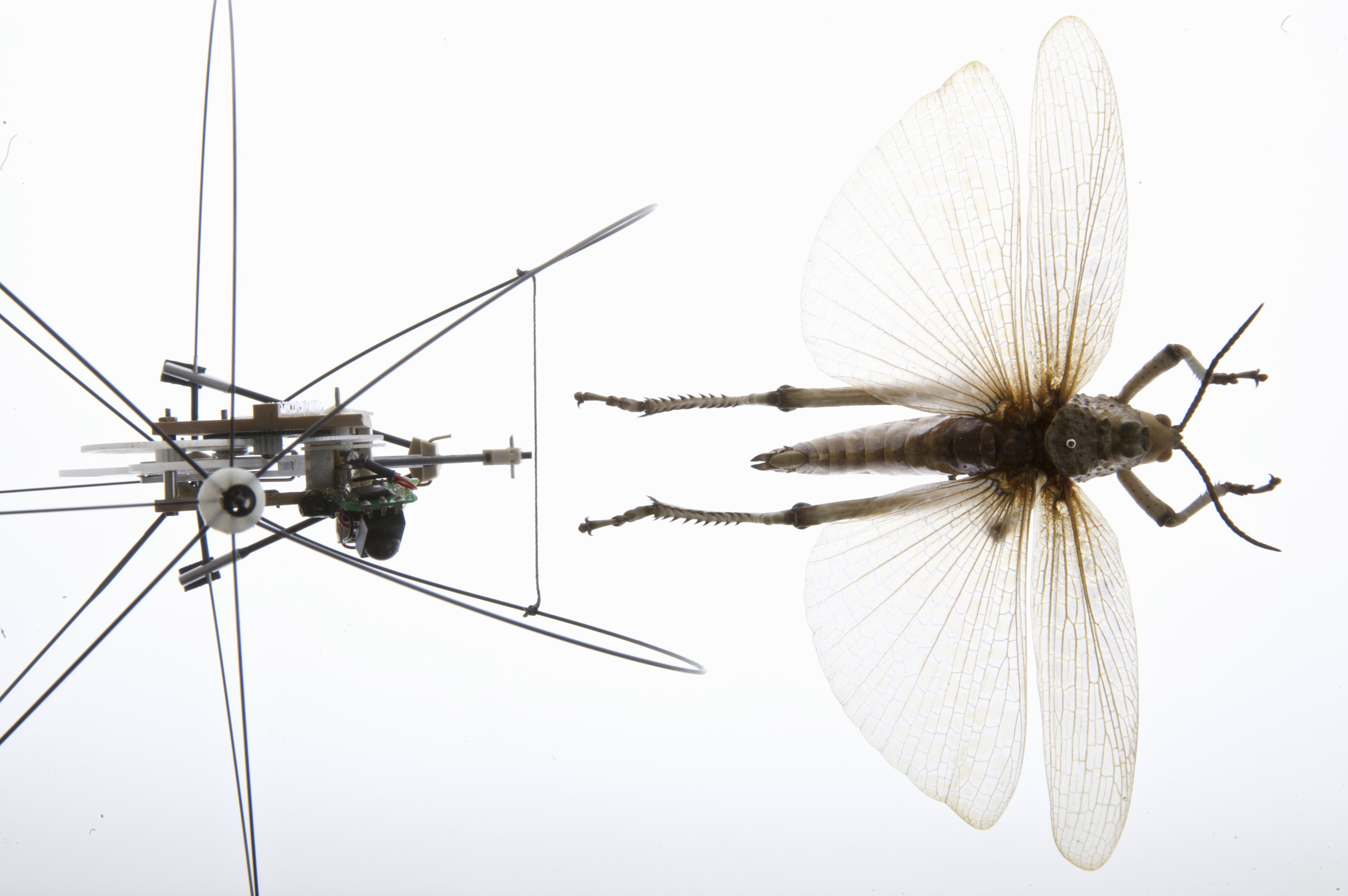Behold the innovative power of biomimetics
Cockroach-inspired robots, gecko-inspired drones, and more

It often pays to borrow a page from nature's playbook. Just look at the UC Berkeley scientists who recently made headlines with their cockroach-inspired robot.
"Often nature's most revolting animals can teach us important design principles," biologist Robert Full told The Week. Full envisions that his sturdy, six-legged robot could be dispatched to disaster zones to search for survivors in rubble. "Bioinspired design is becoming the leading paradigm for the development of new technologies that will lead to significant scientific, societal, and economic impact."
Bio-inspired design — which comes under the broader umbrella of biomimetics — has actually been around for centuries. Leonardo da Vinci famously was excited by the prospect of people flying like birds and in the early 1500s sketched designs for a flapping-winged machine (the "ornithopter") based on avian and bat mechanics. The Wright brothers took that idea across the finish line in 1903, albeit in a very different form, with their airplane modeled on the way birds angle their wings for balance and control. The term biomimetics, however, wasn't actually coined until 1969, when biophysicist Otto Schmitt used it in a scientific paper he presented in Boston (his animal-inspired invention was an electric circuit patterned on the neural impulse systems of squids).
The Week
Escape your echo chamber. Get the facts behind the news, plus analysis from multiple perspectives.

Sign up for The Week's Free Newsletters
From our morning news briefing to a weekly Good News Newsletter, get the best of The Week delivered directly to your inbox.
From our morning news briefing to a weekly Good News Newsletter, get the best of The Week delivered directly to your inbox.
The signature example of biomimetics in action may be the invention of Swiss engineer George de Mestral, who in 1948, after a hunting trip in the Alps, was frustrated and fascinated by the burrs he picked from his clothing and his dog's fur. Studying them under a microscope, he was struck by the way the seeds' hooks snared loops of thread or fur and set out to mimic the design. The result: Velcro.
"Nature took millions, if not billions, of years to become the way it is — there's a lot of trial and error over the years to get to the thing that worked," Beth Rattner, executive director of the nonprofit Biomimicry Institute, told Wired. "We'd be foolish not to look at those designs."
Indeed, this type of research is taking place across the country. Scientists at the Massachusetts Institute of Technology have been looking to otters for clues to staying warm. The key for the animals is their dense fur — about 1 million hairs per square inch — which traps air next to their bodies and prevents cold water from reaching their skin. Developing artificial versions of the fur, and studying the effects of different hair lengths, textures and spacing, could lead to a better material for wetsuits for cold-water divers.
A joint team from Stanford and the University of Pennsylvania, meanwhile, has been tapping into geckos' adhesive powers. The creature can skitter across ceilings and walls thanks to its foot pads, each containing hundreds of ridges, which in turn have millions of thin hairs; split ends at the tip of each hair creates a molecular attraction that sticks when pulled in one direction and releases when pulled in another. Last year the scientists put those principles to work in a quadcopter drone, enabling it to stick a landing on any surface and at any angle — a technological leap that could be promising for companies like Amazon and Google that are interested in drone delivery.
A free daily email with the biggest news stories of the day – and the best features from TheWeek.com
And then there are the Berkeley scientists, who wondered what might be learned from the cockroach's ability to infest seemingly any space.
A series of experiments showed that the bugs can withstand pressure up to 900 times their body weight, squeeze through a space the height of two stacked pennies, and move quickly even when flattened thanks to their unusual exoskeletons — a mix of rigid plates connected by more flexible tissue. When the roaches are compressed, their legs sprawl outward and they start using a wriggling-like method called "body friction-legged crawling." Their pace: nearly 20 body lengths a second.
Putting their knowledge to work, the scientists designed a prototype for a small, soft-bodied search-and-rescue robot. It's about three inches tall with a flexible, low-friction shell that allows it to compress and work its way through tight spaces. Researchers imagine sending in a swarm of these robots after earthquakes, bombings, or other disasters. In addition to seeking survivors, the robots could be equipped with sensors that gather data about rubble stability or other environmental factors.
"With around 1.5 million described species, and probably some 9 million eukaryotic species in existence, researchers pursuing biomimetic approaches have barely scratched the surface of biological inspiration," Emilie Snell-Rood, an assistant professor of ecology, evolution and behavior at the University of Minnesota, wrote in Nature in January. It's a staggering and encouraging thought.
Alexis Boncy is special projects editor for The Week and TheWeek.com. Previously she was the managing editor for the alumni magazine Columbia College Today. She has an M.F.A. from Columbia University's School of the Arts and a B.A. from the University of Virginia.
-
 Political cartoons for December 21
Political cartoons for December 21Cartoons Sunday’s political cartoons include Christmas movies, AI sermons, and more
-
 A luxury walking tour in Western Australia
A luxury walking tour in Western AustraliaThe Week Recommends Walk through an ‘ancient forest’ and listen to the ‘gentle hushing’ of the upper canopy
-
 What Nick Fuentes and the Groypers want
What Nick Fuentes and the Groypers wantThe Explainer White supremacism has a new face in the US: a clean-cut 27-year-old with a vast social media following